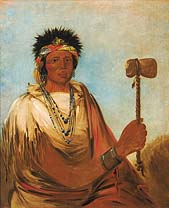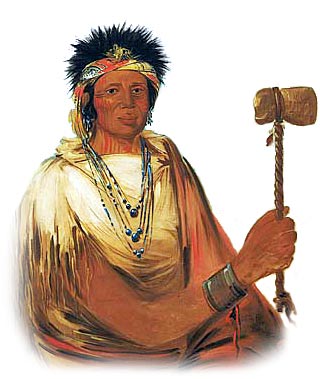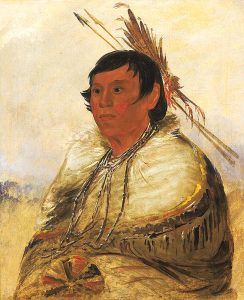
Echoes of the Wabash: The Enduring Journey of the Piankashaw People
In the annals of American history, the stories of Indigenous peoples often unfold as complex tapestries woven with threads of deep cultural heritage, profound loss, and an unyielding spirit of resilience. Among these narratives, that of the Piankashaw people stands as a poignant testament to survival and adaptation. Once proprietors of vast territories in the fertile Ohio River Valley, their journey is a microcosm of the broader Indigenous experience in North America: a rich pre-colonial existence, devastating encounters with European powers, forced migrations, and a continuous struggle to preserve identity and sovereignty in the modern era. Today, the Piankashaw are recognized as part of the federally acknowledged Peoria Tribe of Indians of Oklahoma, a testament to their enduring legacy despite centuries of immense pressure.
The ancestral lands of the Piankashaw stretched across what is now western Indiana, eastern Illinois, and parts of Ohio, particularly along the Wabash River. As a branch of the larger Miami Confederacy and part of the Algonquian linguistic family, they shared cultural and linguistic ties with the Wea, Kaskaskia, and other related tribes. Their name, often translated as "People of the Split Hair," hints at a distinctive hairstyle or perhaps a particular clan affiliation. Prior to European contact, the Piankashaw were a semi-nomadic people, adept at both agriculture and hunting. They cultivated corn, beans, and squash, establishing seasonal villages, while also venturing on extensive hunts for buffalo, deer, and other game that sustained their communities. Their social structure was based on clans, with strong communal ties and a spiritual connection to the land that permeated every aspect of their lives.
The arrival of French fur traders in the late 17th century marked a pivotal turning point. The Piankashaw, strategically located at the crossroads of major waterways, quickly became integral to the burgeoning fur trade economy. This interaction brought both opportunities and profound challenges. European goods like firearms, metal tools, and textiles revolutionized their material culture, but also introduced new dependencies and, more tragically, devastating diseases to which Indigenous populations had no immunity. Smallpox, measles, and influenza swept through their villages, decimating populations and disrupting traditional social structures.

As the French and British empires vied for control of North America, the Piankashaw found themselves caught in a geopolitical struggle far beyond their making. Their alliances shifted, reflecting the fluid and often perilous political landscape. Initially strong allies of the French, they fought alongside them during the French and Indian War (1754-1763). However, with the British victory and the subsequent Treaty of Paris, the Piankashaw’s position became precarious. British policies often neglected or outright antagonized Native American interests, leading to increased tensions and conflicts such as Pontiac’s Rebellion, in which some Piankashaw participated.
The American Revolution further complicated their situation. Torn between loyalty to old allies, the desire to protect their lands, and the pragmatic need for survival, many Piankashaw sided with the British against the encroaching American settlers. This decision proved costly. Following American independence, the newly formed United States government adopted aggressive expansionist policies, viewing Indigenous lands as vital for its burgeoning population. The Piankashaw, along with other tribes in the Ohio Valley, became targets of military campaigns designed to clear the way for white settlement.
The late 18th and early 19th centuries were characterized by a relentless series of treaties that systematically dispossessed the Piankashaw of their ancestral lands. Treaties like the Treaty of Greenville (1795), following General "Mad" Anthony Wayne’s decisive victory at the Battle of Fallen Timbers, forced them to cede vast territories. Subsequent agreements, often negotiated under duress and through coercion, further eroded their land base. The Treaty of Fort Wayne (1809) and the Treaty of Vincennes (1804, 1805), for instance, saw the Piankashaw surrendering significant portions of Indiana. Each cession chipped away at their economic self-sufficiency and cultural integrity, pushing them further west and consolidating them into ever-smaller reserves.
The pressures from land-hungry settlers and an expansionist government ultimately led to forced removal. In the 1830s and 1840s, a period often referred to as the "Trail of Tears" for its devastating impact on Southeastern tribes, the Piankashaw were compelled to relocate from their remaining lands in Illinois and Indiana to reservations in Kansas. This journey was fraught with hardship, disease, and loss. The Kansas period, however, was not one of stable resettlement. The federal government’s policy of "concentration" continued, aiming to consolidate smaller tribes.
It was in Kansas that a critical chapter in the Piankashaw’s modern history unfolded: their amalgamation with other Algonquian-speaking tribes. Diminished in number and facing shared challenges, the Piankashaw, Wea, Kaskaskia, and a remnant of the Peoria tribe formally united in 1854 to form the Confederated Peoria Tribe. This act of consolidation was not merely administrative; it was a testament to their adaptability and determination to survive as a collective people. As one tribal historian noted, "When your numbers dwindle, and the outside pressures are immense, you find strength in unity. They didn’t vanish; they merged, bringing their unique histories and traditions into a shared future."
The relocation saga continued. In 1867, the Confederated Peoria Tribe was again forced to move, this time to Indian Territory (present-day Oklahoma). Here, they were allotted lands under the federal policy of allotment, which aimed to dissolve communal tribal land ownership and assimilate Native Americans into mainstream American society by making them individual landowners. This policy, enshrined in the Dawes Act of 1887, proved disastrous for many tribes, leading to further loss of land through sales to non-Native individuals and a breakdown of traditional communal systems.
Despite these immense challenges, the Piankashaw, as part of the Peoria Tribe, began to rebuild their lives in Oklahoma. They established new communities, adapted to a different environment, and worked to preserve what they could of their cultural heritage. The early 20th century saw the federal government vacillate between policies of assimilation and a belated recognition of tribal sovereignty. The Indian Reorganization Act of 1934 marked a shift, allowing tribes to re-establish their governmental structures and manage their own affairs. This act provided a crucial framework for the Peoria Tribe to formally organize under a written constitution and by-laws, paving the way for greater self-determination.
In the late 20th and early 21st centuries, the Peoria Tribe of Indians of Oklahoma, representing the combined heritage of the Piankashaw, Wea, Kaskaskia, and Peoria, has made significant strides in economic development and cultural revitalization. Like many tribes, they have leveraged their sovereign status to pursue economic ventures, notably in the gaming industry. The Buffalo Run Casino & Resort in Miami, Oklahoma, is a major employer and a vital source of revenue, funding essential tribal services such such as healthcare, education, housing, and elder care programs.

Beyond economic prosperity, a renewed focus on cultural preservation is at the heart of the tribe’s contemporary efforts. There is a concerted push to revitalize the Miami-Illinois language, of which the Piankashaw dialect was a part. Programs are in place to teach the language to younger generations, ensuring that the voices of their ancestors do not fade into silence. Cultural centers, museums, and annual gatherings celebrate their shared history, traditional arts, storytelling, and ceremonies, fostering a strong sense of identity and community among tribal members. "Our history is long and often painful," stated a tribal elder, "but our spirit endures. We teach our children about the Wabash, about the removals, but also about the strength of our people to adapt, to unite, and to thrive here in Oklahoma."
The journey of the Piankashaw people is a powerful narrative of resilience against overwhelming odds. From the vast forests and waterways of their ancestral home to the plains of Oklahoma, they have faced existential threats to their culture, land, and very existence. Yet, through adaptation, political savvy, and an unwavering commitment to their collective identity, they have not only survived but are now actively rebuilding and revitalizing their heritage as an integral part of the Peoria Tribe. Their story is a reminder that the echoes of the Wabash still resonate, carried forward by a people determined to honor their past, celebrate their present, and secure a vibrant future for generations to come.


